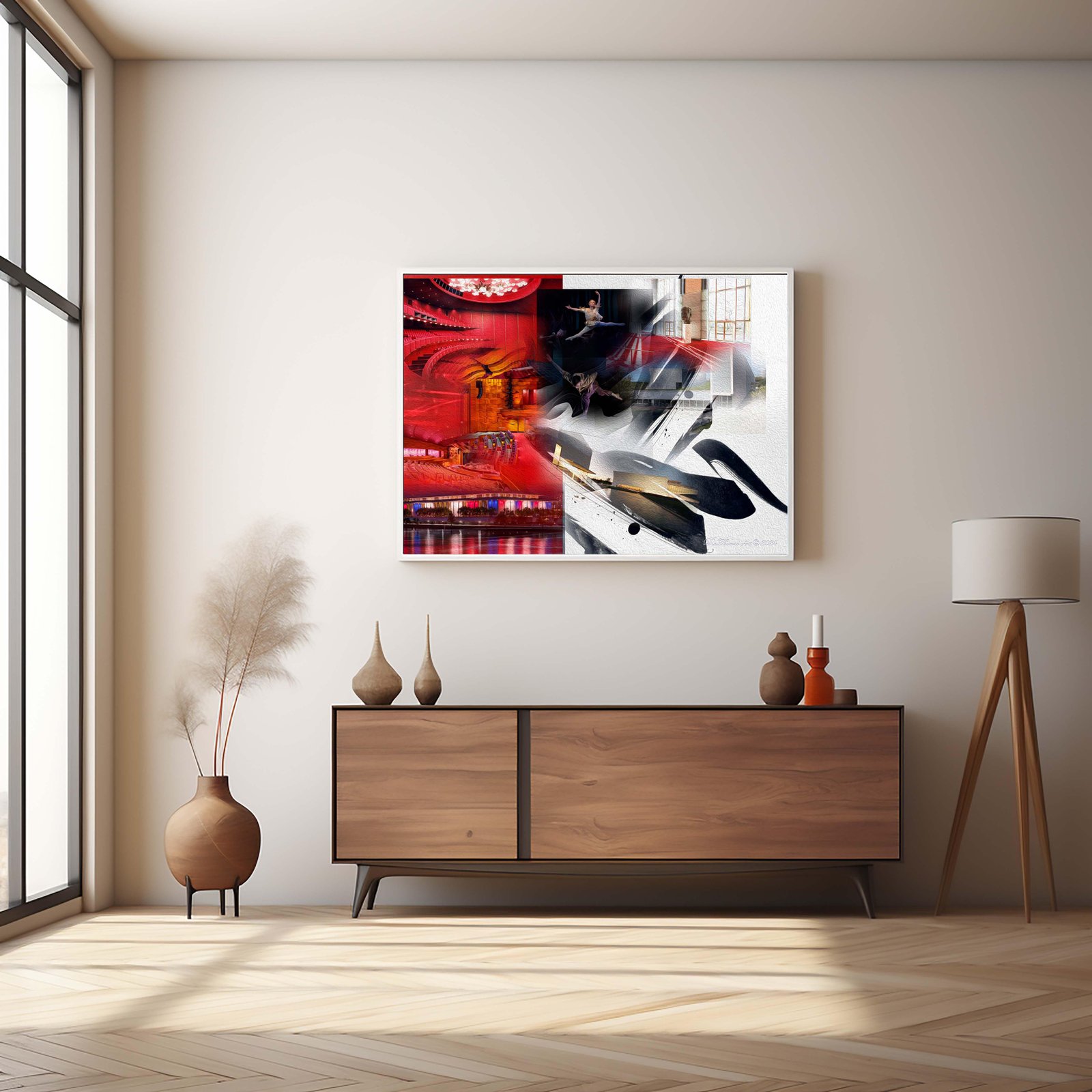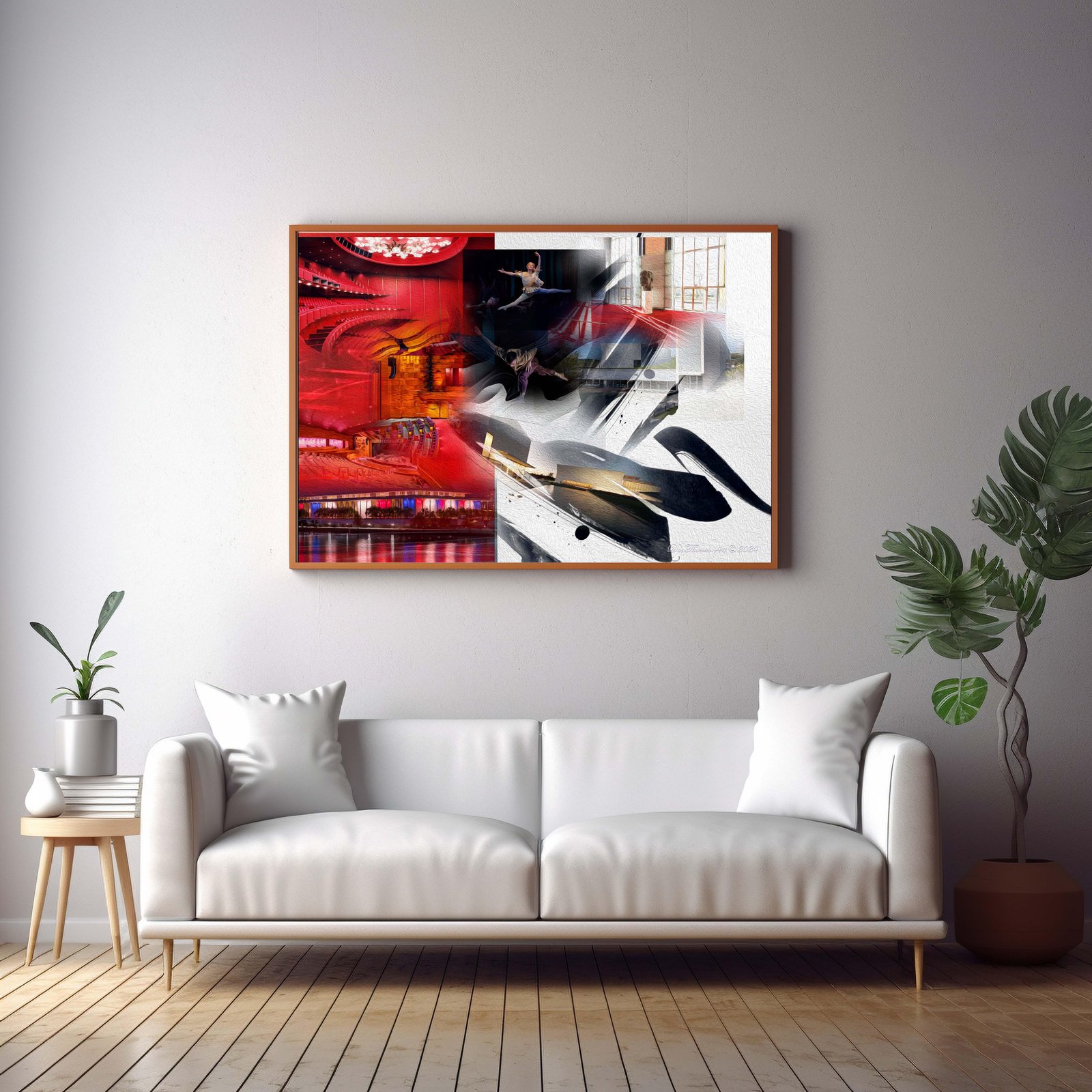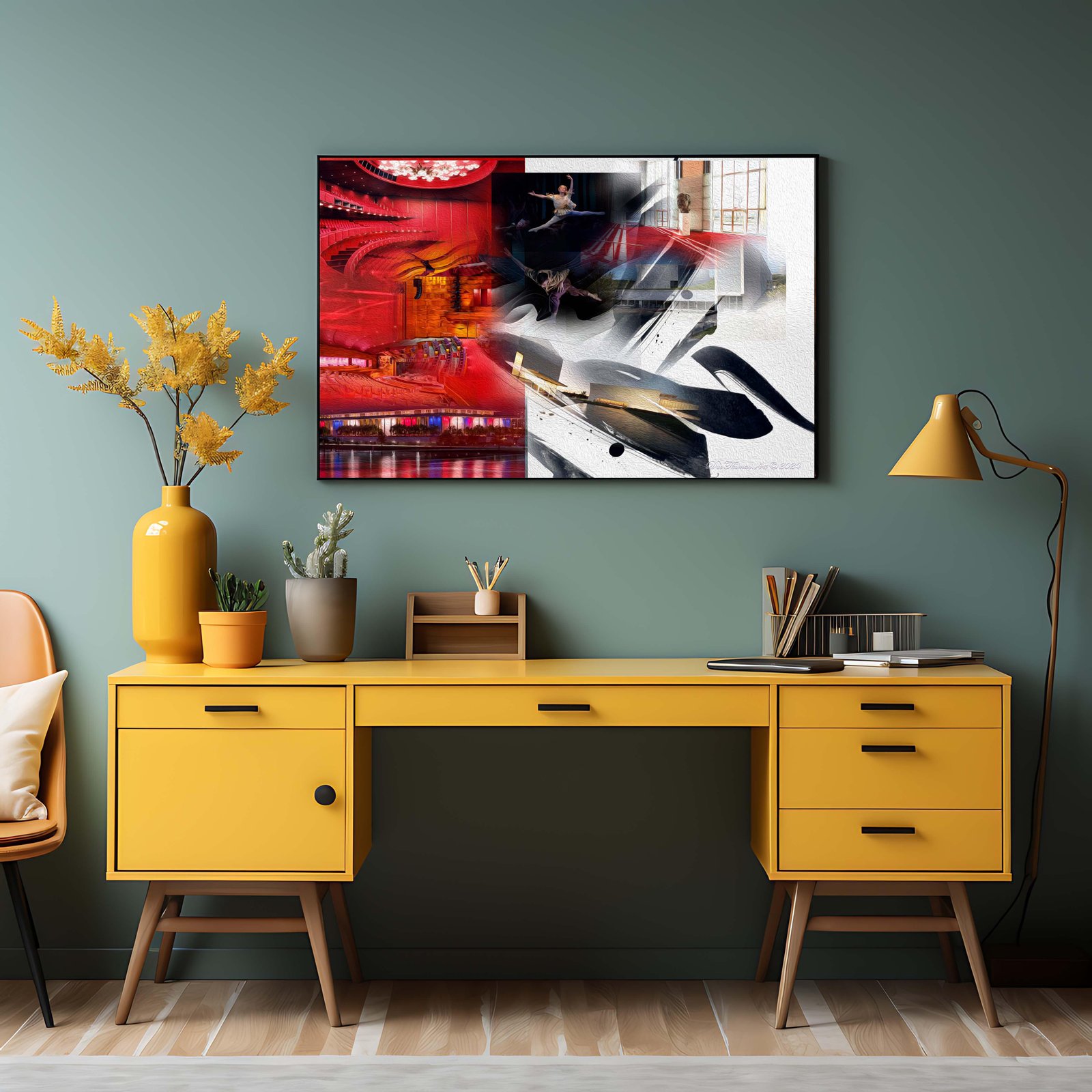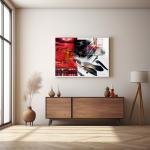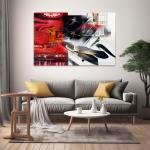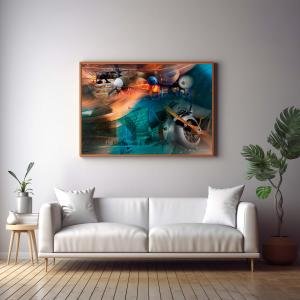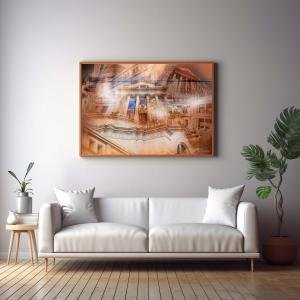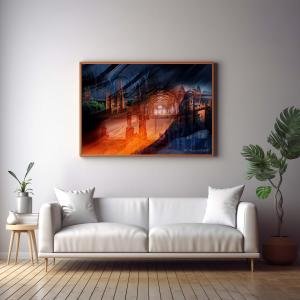Rhythms of Culture: A Dance Between Architecture and Art
"Rhythms of Culture: A Dance Between Architecture and Art" is a visual ode to the John F. Kennedy Center for the Performing Arts, an iconic beacon of culture and creativity in Washington, D.C. The Kennedy Center is not just a venue for the performing arts but a living monument to the power of culture to inspire, heal, and unite people. Opened in 1971 , it stands as a tribute to President John F. Kennedy’s legacy and his belief in the power of the arts.
Please see Below for Details…
Hotline Order:
Mon - Fri: 07AM - 06PM
404-872-4663
The central element in this artwork is the Concert Hall Interior, drenched in rich red tones. The red color represents passion, intensity, and the vibrant energy that fills the air during performances. Red is often associated with life and fervor, which speaks to the heart of the arts—where creativity and expression are brought to life on stage. The architectural curves and seats represent the hundreds of stories and emotions experienced by audiences as they witness ballet, symphonies, and dramatic performances. It is as though the architecture itself becomes a silent witness to the triumphs and heartaches played out under its lights.
In the midst of this architectural marvel is a graceful Ballet Dancer mid-performance, symbolizing the fluidity and elegance of the performing arts. Ballet is one of the oldest and most disciplined forms of artistic expression, and here it takes center stage. The dancer’s soft form contrasts with the rigidity of the architecture, embodying the delicate balance between discipline and freedom that the arts demand. The muted tones around the dancer suggest a dreamlike quality—where art lifts us from the mundane into a world of fantasy and emotional truth. This juxtaposition speaks to why I included the dancer in this piece: to show how art allows us to transcend the physical world and explore emotional landscapes we might not otherwise touch.
On the right side of the artwork, we see the Modern Architecture of the Kennedy Center, with its crisp lines and monumental presence. This building, overlooking the Potomac River, is a testament to the grandeur and importance of the arts in American life. The Kennedy Center was designed by Edward Durell Stone, a famed modernist architect, who intended for the building to reflect both the simplicity and the nobility of its purpose. The architecture is clean, modern, and purposeful, much like the productions that take place within it. The soft sunlight touching its walls adds warmth to the image, symbolizing the Center's welcoming nature, where all are invited to experience the beauty of performance.
The abstract brush strokes found throughout the artwork were included to emphasize the movement, creativity, and fluidity of the arts. These strokes are dynamic and unpredictable, much like the experience of art itself. They reflect the emotional highs and lows, the intense joy and subtle sadness that comes with artistic expression. In contrast to the structured architecture, these brush strokes remind us that while art can be disciplined, it is also about letting go—allowing the heart to guide us rather than the mind. This duality was at the core of my inspiration when I created this image: to highlight how the rigid structures of life (represented by the architecture) can coexist with the wild, uncontrolled beauty of creative expression.
The color palette of reds, whites, and blacks is crucial in this piece. Red, as mentioned, is the color of passion and vitality—it represents the lifeblood of the arts. White adds balance, calm, and reflection, symbolizing purity and truth in artistic expression. Black adds depth, grounding the image and representing the mystery and intrigue that the arts often evoke. Together, these colors create a harmonious balance, much like a perfectly orchestrated symphony, with each color playing its part to complete the whole.
In creating this piece, I wanted to pay homage to the John F. Kennedy Center’s history. Established as a living memorial to President Kennedy, the Center embodies his belief in the arts' ability to influence society. He famously said, "I look forward to an America which will not be afraid of grace and beauty." This artwork reflects that vision. It shows the Center as a place where grace, beauty, and creative expression come together in a dance that both mirrors and influences society.
The Kennedy Center Honors, an annual celebration of excellence in the arts, was founded in 1978 and remains a defining event of the Center. It acknowledges artists across various genres, from dance and music to theater and film, recognizing their impact on American culture. Figures like Leonard Bernstein, Mikhail Baryshnikov, and David Bowie have graced its stages and received its honors, marking the Kennedy Center as a place where artistic history is both made and remembered.
When reflecting on the creation of this piece, I realized how much art means not only to the performers but to those who watch and engage with it. The Kennedy Center stands as a reminder that culture is the backbone of a nation. Without art, we lose our connection to our humanity—our ability to feel, to empathize, and to dream. This piece is a tribute to that power. It captures the vibrant energy that fills the Kennedy Center’s halls, the elegance of its performers, and the timelessness of its architecture.
In sum, "Rhythms of Culture" is more than just a collage of images; it is a love letter to the arts and to the architectural marvel that houses them. The rich colors, the juxtaposition of movement and stillness, and the inclusion of historical figures and architecture all serve to remind us that the arts are ever-present in our lives, shaping the way we see the world and ourselves. The Kennedy Center continues to be a place where the soul of a nation is expressed through music, dance, and theater—and this piece reflects that deep connection between art and life.
Add your review
Your email address will not be published. Required fields are marked *
Please login to write review!
Looks like there are no reviews yet.

